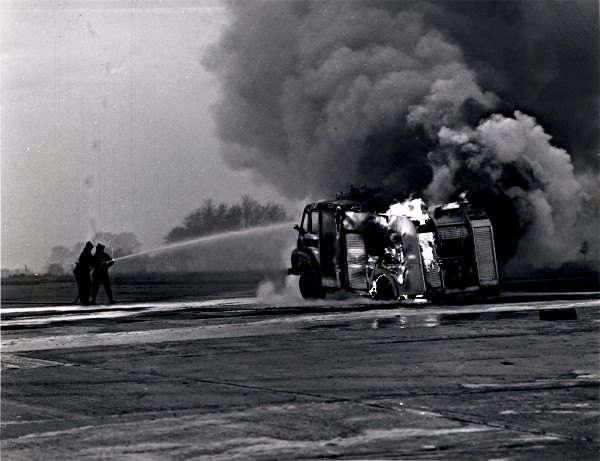Memoirs Of An Independent Repair Shop Owner: My Formative Years Wrenching on British Steel – Road Romps Reserved for Riveting Recall, Not Righteous Repetition
In my last entry, I tried to convey the wonderfulness that was, and is part and parcel to the British Car driving experience, which I was able to enjoy through my “wrenching connections”. For me, if I had to describe this experience in one word, it would have to be “unique”; and when it comes to motorized transport, unique is ALWAYS worth doing at least once.
The experiences I related in the last entry, as far as I’m concerned, are worth doing often and on as regular a basis as possible. In this entry, on the other hand, I’m going to relate some British Car driving experiences that define the darker side of the term.
Much as an ultimately uncomfortable, painful, or downright disastrous experience endured in the search of a Unique Significant Other, such encounters with autos British become indelibly etched into the memory banks. While the passage of time has not reduced the desire to avoid physical repetition of these experiences, it certainly hasn’t diminished their recall worthiness.
“Unique” tends to behave that way.
The first recount involves a late ‘70’s bisection of Los Angeles County, using the then-uncluttered mid-day freeway routes available—in a ’72 MG Midget.
This example had just had its non-overdrive transmission overhauled, and I was giving it a long-distance road test in connection with a cross-town dealer transfer.
All it took was the distance required to achieve appropriate freeway-velocity (at that moment, about 75 mph) to realize that the little Midge was not at all in its element.
Everything seemed like it was working against the both of us.
Even with the seat adjusted all of the way at the back of its travel, my chest was still way too close to the rather largish three-spoke steering wheel, promoting an “elbows out” driving style. This was exacerbated by the fact that there was nowhere comfortable for me to place my left elbow—the door being too close and the bolster too high.
The steering wheel itself was mounted within what seemed to be less than six inches from the dashboard, which was about on the same plane with the windshield, which was so narrow that engineers were required to use THREE very short wiper blades in an effort to clear the majority of the viewing area in the event of precipitation. So, it could have been worse…it could have been RAINING!
Cruising with the flow of traffic, the little one-liter engine was working at about 85% capacity, and spinning at somewhere near 4,500 rpm—not that far south of redline, and very doubtful that it actually had the power to reach that threshold.
Add that clapped-out powertrain dynamic to the overall dimensions of the car, inside and out, and I felt more vulnerable than I ever had in or on ANY motorized conveyance, before or since.
I must have driven the little guy, in reality, only about 30 miles in each direction, but it felt like I’d been in a real adventure by the time the round trip had been completed.
Roald Amundsen, famous South Pole expeditionist once said something to the effect that one has an “adventure” when one fails to prepare. The little MG—and by extension, I—was certainly unprepared for the high-speed freeway cruising experience!
While the Sunbeam Alpine was a quite enjoyable sports car, mainly due to its balance, its Mr. Hyde counterpart, the Tiger, having lost such balance in the name of straight-line performance, was much less enjoyable. You did indeed feel like you had the proverbial TIGER by the tail when behind the wheel of one of these units—especially when equipped with one of the larger displacement and more powerful engine options later offered.
I was impressed into service to design and install a custom dual exhaust system on a friend’s Tiger. Not content with just having a Tiger by the tail, this friend had gone to the trouble of pegging the “Extreme-O-Meter” by doing some additional performance modifications.
He had installed a 5.0 later-model Mustang engine equipped with OVERDRIVEN Paxton Supercharger. As if just the stock H.O. blue oval 302 mill wasn’t plenty for this skinny-tired, under-braked, short wheelbase little “sports car”, he was running about 10 to 12 p.s.i. intake boost, which—with the overdriven blower—was achieved well before the engine reached 2000 rpm!
Even in a straight line, the car was unmanageable; the rear tires breaking loose in a smoke-enveloped wheel-hopping tirade at the slightest provocation.
Not wanting to be intimidated by such behavior, I decided to take it on a relatively short section of twisty road in the general vicinity of my shop. Much to my lack-of-surprise, it was even less manageable in the corners than in a straight line—even light years worse than the standard model Tiger!
Not my idea of a good time.
One year, while making a banzai run up US 1 to the Monterey Historic Auto Weekend, I rounded a corner and encountered a British Racing Green Tiger upside-down on the inside shoulder of the road. The driver appeared O.K., and was conversing with another motorist that happened on the scene before I did. The car was equipped with a proper roll hoop behind the seats. No doubt, he was an experienced Tiger pilot.
Phil ran a successful independent repair shop on the West Coast for close to 20 years, working over a decade before that at both dealer and independent repair shops. He is presently semi-retired from the business of auto repair, but still keeps his hand in things as a consultant and in his personal garage.
More by Phil Coconis
Latest Car Reviews
Read moreLatest Product Reviews
Read moreRecent Comments
- Bkojote @Lou_BC I don't know how broad of a difference in capability there is between 2 door and 4 door broncos or even Wranglers as I can't speak to that from experience. Generally the consensus is while a Tacoma/4Runner is ~10% less capable on 'difficult' trails they're significantly more pleasant to drive on the way to the trails and actually pleasant the other 90% of the time. I'm guessing the Trailhunter narrows that gap even more and is probably almost as capable as a 4 Door Bronco Sasquatch but significantly more pleasant/fuel efficient on the road. To wit, just about everyone in our group with a 4Runner bought a second set of wheels/tires for when it sees road duty. Everyone in our group with a Bronco bought a second vehicle...
- Aja8888 No.
- 2manyvettes Since all of my cars have V8 gas engines (with one exception, a V6) guess what my opinion is about a cheap EV. And there is even a Tesla supercharger all of a mile from my house.
- Cla65691460 April 24 (Reuters) - A made-in-China electric vehicle will hit U.S. dealers this summer offering power and efficiency similar to the Tesla Model Y, the world's best-selling EV, but for about $8,000 less.
- RHD The analyses above are on the nose.It's a hell of a good car, but the mileage is reaching the point where things that should have worn out a long time ago, and didn't, will, such as the alternator, starter, exhaust system, PS pump, and so on. The interiors tend to be the first thing to show wear, other than the tires, of course. The price is too high for a car that probably has less than a hundred thousand miles left in it without major repairs. A complete inspection is warranted, of course, and then a lower offer based on what it needs. Ten grand for any 18-year-old car is a pretty good chunk of change. It would be a very enjoyable, ride, though.



































Comments
Join the conversation
I had a Sunbeam Tiger Mark II. Lot's of fun in a straight line, deathtrap in the turns. 13" tires with the worst brakes this side of the Russian GAZ made for interesting times running around the Bay Area.
"Cruising with the flow of traffic, the little one-liter engine was working at about 85% capacity" Did you swap the engine or something? MkIII Midgets were 1275cc, Only MkIs were 1 litre